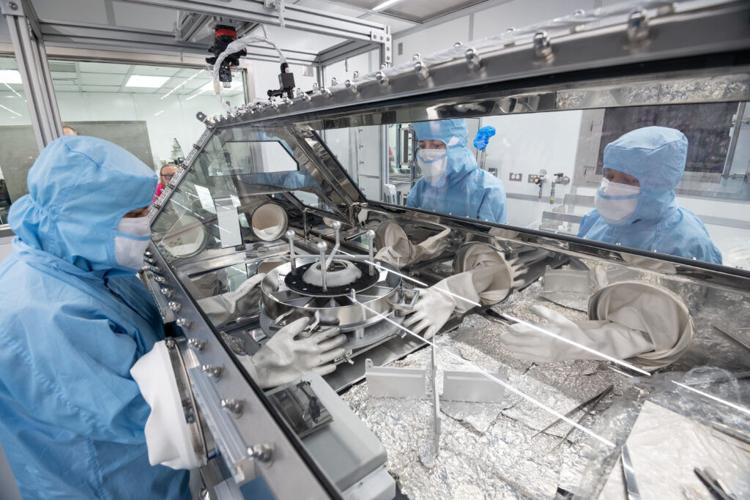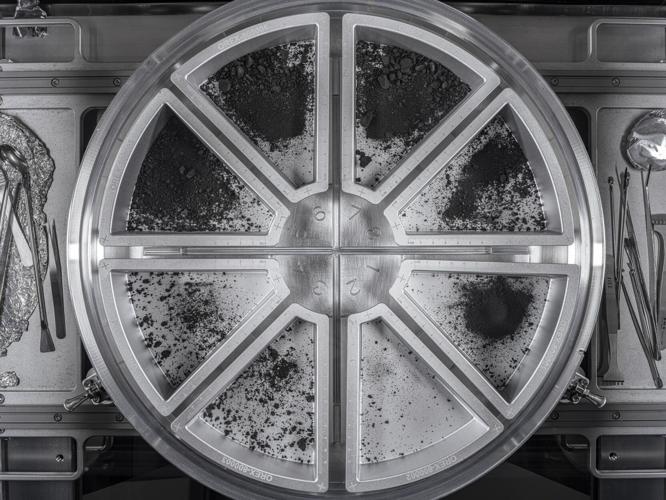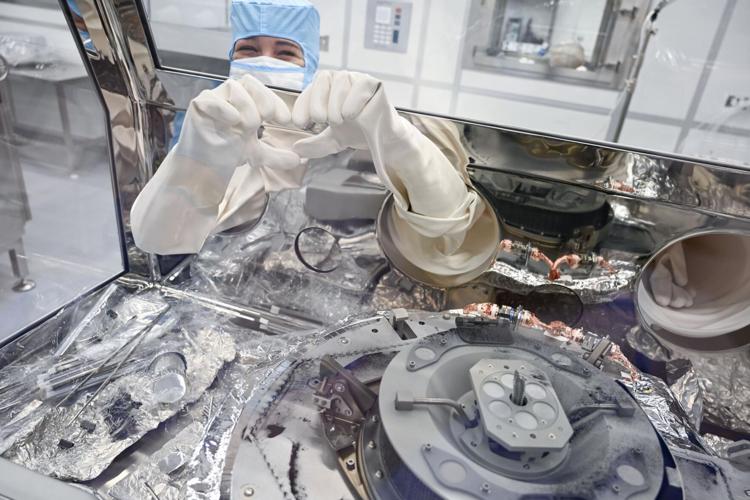The weight is officially over for the University of Arizona-led OSIRIS-REx space mission.
On Thursday, NASA announced that a grand total of 121.6 grams of rocks and dust were brought back from the asteroid Bennu, more than twice the amount required to declare the mission a success.
The final tally came after the last bits of asteroid debris were emptied from the robotic spacecraft’s Touch-and-Go Sample Acquisition Mechanism, which famously kissed the surface of Bennu on Oct. 20, 2020 but returned to the Earth last year with a stuck lid.
All material from the OSIRIS-REx mission has now been collected.
It took specialists at NASA’s Johnson Space Center in Houston until Jan. 10 to finally remove two stubborn fasteners that kept them from opening the device, more than three months after the OSIRIS-REx return capsule delivered it safely to the Utah desert on Sept. 24.
Inside the sample mechanism, the curation team at Johnson recovered another 51.3 grams of dark gray dust and pebbles, on top of the 70.3 grams they had already collected from outside of the device.

An image released by NASA Thursday shows eight sample trays containing the final material collected from asteroid Bennu by the University of Arizona-led OSIRIS-REx space mission.
The OSIRIS-REx team needed to bring back at least 60 grams of regolith from Bennu to meet the mission’s science goals.
The entire haul from the $1.2 billion space voyage could easily fit inside an 8-ounce plastic foam coffee cup with plenty of room left over for cream and sugar, but it still represents the largest asteroid sample ever collected in space.
The Japan Aerospace Exploration Agency conducted the only other successful asteroid-sampling missions so far: Hayabusa, which delivered less than a milligram of dust grains from asteroid Itokawa in 2010; and Hayabusa2, which returned with just over 5 grams of samples from asteroid Ryugu in 2020.
The OSIRIS-REx sample is 22 times larger and ranks as the most material brought back from space since Apollo 17 returned with a payload of handpicked moon rocks in 1972.
And when you’re studying something on an atomic scale, every little bit of it goes a long, long way.
Thanks to modern instruments and so-called “micro-sampling” techniques, even a single speck of asteroid dust measuring just 20 microns across — roughly one-quarter the thickness of a human hair — can be sliced and studied hundreds of times.

Astromaterials processor Mari Montoya makes a heart with her hands while working in the OSIRIS-REx canister glovebox at NASA’s Johnson Space Center in Houston on Sept. 27, 2023. NASA released a late Valetine’s gift on Thursday: the final tally for OSIRIS-REx, which brought back a 121.6 grams of material from the asteroid Bennu, double the mission’s minimum requirement.
Scientists hope the pristine bits of material, left over from the formation of the solar system about 4.5 billion years ago, will shed new light on the origins of the planets and life itself.
They don’t expect to find anything alive in the samples, but they are looking for evidence of water and organic molecules like those that may have been delivered to the young Earth by meteorites.
Tiny amounts of the Bennu bonanza have already been distributed to members of the U of A-led science team, which includes more than 200 researchers at labs in Tucson and around the world.
Later this spring, NASA’s curation team will release a catalog of the OSIRIS-REx samples and make them available by request to the global scientific community.
At least 70% of the material brought back from Bennu will stay at Johnson, where it will be preserved in pristine condition for study by future generations of scientists.
The Tucson-born asteroid mission begins its pursuit of its next target.






